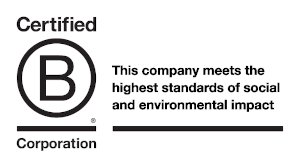Infrastructure and the Circular Economy
Infrastructure designers and providers have enormous potential to make a positive contribution to society, as well as a responsibility for the long lifespan and significant carbon impact of civil infrastructure projects. In this post, Ralf Claussner and Carrie Behar discuss how the circular economy can support the delivery of more sustainable and impactful infrastructure, that stands the test of time.
Resource scarcity and depletion
In the 20th century, global material demand increased 10-fold and this number is expected to double again between 2010 and 2030, according to the European Commission. The World Economic Forum estimates that the production of metals, minerals, fossil fuels and biomass rose by 20% between 2011 and 2020. Both institutions are raising concerns about scenarios of resource scarcity in the future.
The construction and operation of buildings and other assets within the built environment sector contributes to resource depletion, as well as being a major emitter of carbon. Our construction industry is already estimated to contribute approximately 10% of total UK carbon emissions. The sector is now faced with the challenge of reconciling a growing population and associated infrastructure needs with increasing cost and environmental impacts of sourcing materials (source: McKinsey).
Embodied carbon in infrastructure
There is growing awareness of the impact of civil engineering and infrastructure projects on carbon emissions, largely due to the high embodied impacts of construction materials and earthworks, including the use of significant amounts of steel and concrete. In 2013, the UK Government published recommendations for reducing carbon in infrastructure, as part of the Infrastructure Carbon Review, with the bold ambition of releasing the ‘value of lower carbon solutions and to make carbon reduction part of the DNA of infrastructure in the UK’.
The UK’s infrastructure sector has responded by starting to address these issues through initiatives such as the Major Infrastructure Resources Optimisation Group (MI-ROG) and the recently formed i3P. HS2 has published its Circular Economy Principles, and aims to generate benefits including lower costs, increased whole-life value and resilient growth.
Application of circular principles to infrastructure delivery
Circular approaches are already being embedded and realised across parts of HS2. In 2018, Useful Projects’ consultancy team worked with HS2 to identify Circular Economy opportunities that could unlock value from the innovative use of resources, over the life cycle of the project. Our sister company Expedition are part of the design team for the new Old Oak Common Station. Their design efforts to minimise the environmental impact of the largest new-build station in the UK included saving 2,700 tonnes of carbon in the material in the roof structure, developing a novel drainage scheme which follows the natural flow of water to reduce operational energy, reducing the foundation material volumes and cost, and improving the buildability of the ground floor slab, all in line with circular economy principles for reduction and reuse.
Reducing embodied impacts through lean design and use of alternative materials is an area of innovation where marginal gains, scaled up, can make a big impact. As part of this work, the HS2 team identified the need for durability, ease of maintenance and adaptability as key to ensuring that materials are retained at their highest value. To achieve this, materials and components should be captured in the business case as assets with high residual values.
Elsewhere, Heathrow has started embedding guidance on Circular Economy principles into their policies and processes, with a focus on their procurement team. The organisation has set clear targets for waste reduction, recycling and alternatives for recovering value for waste streams.
Need for a strategic approach to infrastructure planning
The National Infrastructure Commission (NIC) was set up with the acknowledgement that a strategic approach to infrastructure planning is required to make best use of resources and deliver the greatest possible social value. The NIC have recently launched a set of design principles to maximise the value provided by new infrastructure; within this there is a strong emphasis on people and places and the social value of infrastructure. The most impactful way to transform the infrastructure sector towards circularity is by understanding what assets we already have, and how we can make more efficient and effective use of them, before planning new projects. Innovation in material banks and the use of material passports will be critical to managing our existing infrastructure assets better.
The COVID pandemic raises questions about how much infrastructure we actually need, and what form it should take. The importance of digital infrastructure, last-mile delivery logistics and maintaining connectivity has never been clearer. COVID has also shown us how quickly it is possible to adapt – highlighting a huge opportunity to reuse existing infrastructure assets in novel ways and to extend and adapt how they are used to support citizens to live healthy and purposeful lives. Infrastructure is more than just heavy engineering work; the provision of cycling infrastructure and behaviour change initiatives around how we live, work and consume all have a role to play. The choices we make now will have a significant impact on material use in the future.
Download our Circular Economy Portfolio (3.6MB PDF)
Part II – Five steps to success for a Circular Economy in the built environment
Part III – Ground breaking Circular Economy planning policy




